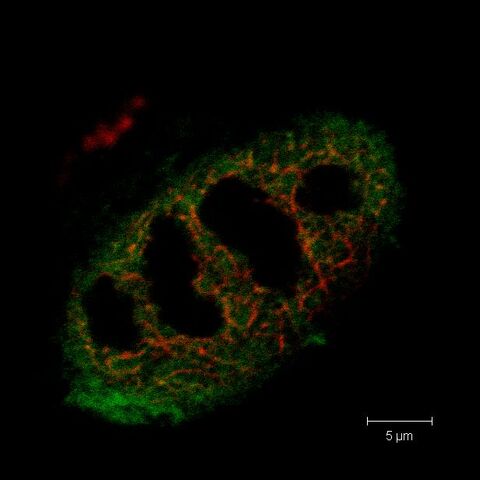Involvement of S100A11 in the repair of DNA double strand breaks
S100 proteins are able to bind and modulate activities of interacting proteins. In this way, S100 proteins are involved in the control of the cell cycle, cell growth and motility. Recently, we detected a functional co-localisation of S100A11 with proteins appearing in homologous recombination repair of DNA double strand breaks (DSB). The recognition of the DSB by Rad54B depends on its interaction with S100A11. In this project, we will analyse in detail the molecular mechanisms by which S100A11 is involved in DNA repair.
Researchers involved in the project
Founding
- Wilhelm-Sander-Stiftung
Selected publications
- Murzik U., Hemmerich P., Weidtkamp-Peters S., Ulbricht T., Bussen W., Hentschel J., von Eggeling F., Melle C.:
Rad54B targeting to DNA double-strand break repair sites requires complex formation with S100A11.
Mol. Biol. Cell 19, 2926-2935 (2008). - Gorsler T., Murzik U., Ulbricht T., Henschel J., Hemmerich P., Melle C.:
DNA damage-induced translocation of S100A11 into the nucleus regulates cell proliferation.
BMC Cell Biol. 11, 100 (2010). - Foertsch F., Teichmann N., Kob R., Hentschel J., Laubscher U., Melle C.:
S100A11 is involved in the regulation of the stability of cell cycle regulator p21(CIP1/WAF1) in human keratinocyte HaCaT cells.
FEBS J. 280, 3840-3853 (2013).


